Europe digital editor
 White House
White HouseRussia has occupied a fifth of Ukrainian territory – and a big map showing the area shaded in red was put up in the Oval Office as if to emphasise that point for President Donald Trump’s talks with Volodymyr Zelensky on Monday.
“I assume you’ve all seen the map,” Trump told Fox News on Tuesday. “A big chunk of territory is taken and that territory has been taken.”
The message from the White House to Ukraine is unmistakable. That land has gone and it is time to consider a territorial compromise with Vladimir Putin or, as some have termed it, land swaps.
Zelensky’s team had brought their own map to the meeting and the Ukrainian leader said later he had been “fighting with what is on that map” during his conversation with Trump, regarding “who controls what – not by hearsay, but in reality”.
Although he felt he had made some headway on correcting any false impressions, by Tuesday Trump’s view was the same. It was clear, he said, that Russia’s force was “so clearly much more powerful, and you know, it’s not like they’ve stopped”.
Asked what the feeling was like in the room with European leaders regarding land swaps he said: “Now they’re talking about Donbas, but Donbas right now is… 79% owned and controlled by Russia.”
Read more: Tracking the war in Ukraine with maps
Before the war began in the east in 2014, Ukraine’s wealthy mining region of Donbas made up about 16% of Ukraine’s economic output.
Putin is reported to have told Trump he wants the whole Donbas region as part of a broad peace deal.
It would certainly save Russia’s leader a considerable amount of blood and treasure.
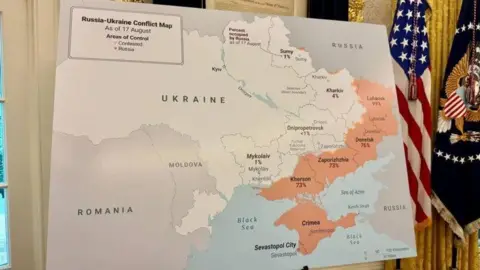
Zelensky said he had also argued about the percentages on the White House map that showed Russian control in a number of Ukrainian regions, ranging from 99% of Luhansk and 76% of Donetsk in Donbas; 73% of Zaporizhzhia and Kherson in the south-east; 4% in Kharkiv in the north-east; and 1% in Sumy and Mykolaiv.
Analysis of latest data from the US-based Institute of War has resulted in similar figures to the White House, and any differences could be down to different methodology used, especially over the extent of Russian control of an area. Part could be under limited control or merely claimed by Moscow.
In areas where the White House suggests 1% of a region is under Russian control, that may reflect only that the Russians have some limited presence, as in Mykolaiv in the south, or where they have largely been repelled, as in Sumy in the north.
Whatever the real figure for Russian control in Donetsk, the fortress cities of Kramatorsk and neighbouring Slovyansk in Donetsk region are still home to large populations.
Local officials say about 242,000 people live in Ukrainian-controlled areas of Donetsk region, and no Ukrainian head of state would consider handing their territory to Moscow.
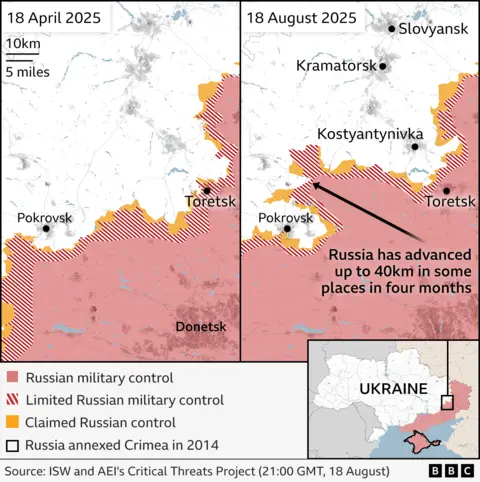
Although Russian forces have made advances in recent months, ISW estimates that seizing the remainder of the Donetsk region would “very likely take Russian forces multiple years to complete after several difficult campaigns”.
Zelensky said the Ukrainian map he had shown Trump showed in the past 1,000 days Russia had managed to occupy less than 1% of Ukrainian territory.
Analysts from Ukraine’s DeepStateUA mapping group said that translated to 5,842 sq km since November 2022.
While Russia did achieve operational success during the early days of the full-scale invasion, DeepState points out a large proportion of occupied territory was then liberated.
Russia has, however, made undeniable advances in the past two to three months, even if more broadly the front line has shifted little since the early months of the war.
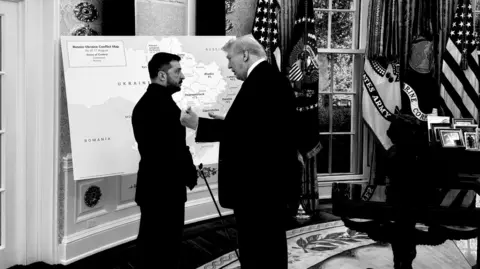 White House
White HouseDefence analyst Konrad Muzyka, who heads Rochan Consulting, says the Russian advance has clearly accelerated in some areas of the east around Kupiansk in Kharkiv region and Kreminna in Luhansk.
“We are seeing far more fires and the Ukrainians are not really able to deploy enough firefighters to put them out,” he told the BBC.
Muzyka cites a lack of Ukrainian manpower to defend a long front line but also Russia’s increased use of drones targeting soldiers, their equipment and particularly their artillery.
Meanwhile, Russia has been able to recruit 30-35,000 soldiers and even with the heavy losses they have sustained on the ground they have been able to build up large operational and strategic reserve forces, he says.
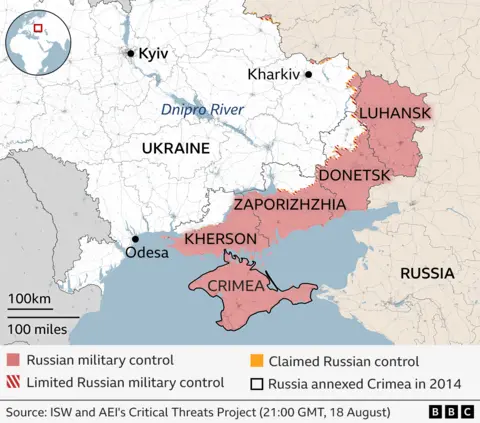
But Russia’s rapid gains in limited areas of the east have not so far been matched elsewhere.
One attempted Russian land grab 10-15km into Ukrainian-controlled territory near Dobropillya in Donetsk region was successfully fought off by Ukrainian forces last week, according to Ukraine’s military leaders.
And although Russia does hold some pockets of land in the Sumy and Kharkiv regions, Ukraine is still in control of an estimated 6,600 sq km of Donbas.
Putin has not just laid claim to broad swathes of Ukraine, he has already annexed four regions as well as Crimea, even though many areas are out of his reach.
The UK’s defence intelligence update estimated recently that based just on Russia’s “incremental battlefield advances so far in 2025” it would take 4.4 more years just to seize the four regions of Luhansk, Donetsk, Zaporizhzhia and Kherson.
That alone explains the different perspectives of Trump and Zelensky when it comes to maps showing the 1,200km front line in Ukraine.
“Thank you for the map, by the way, it was great,” Zelensky told him despite their differences, “I’m thinking how to take it back.”
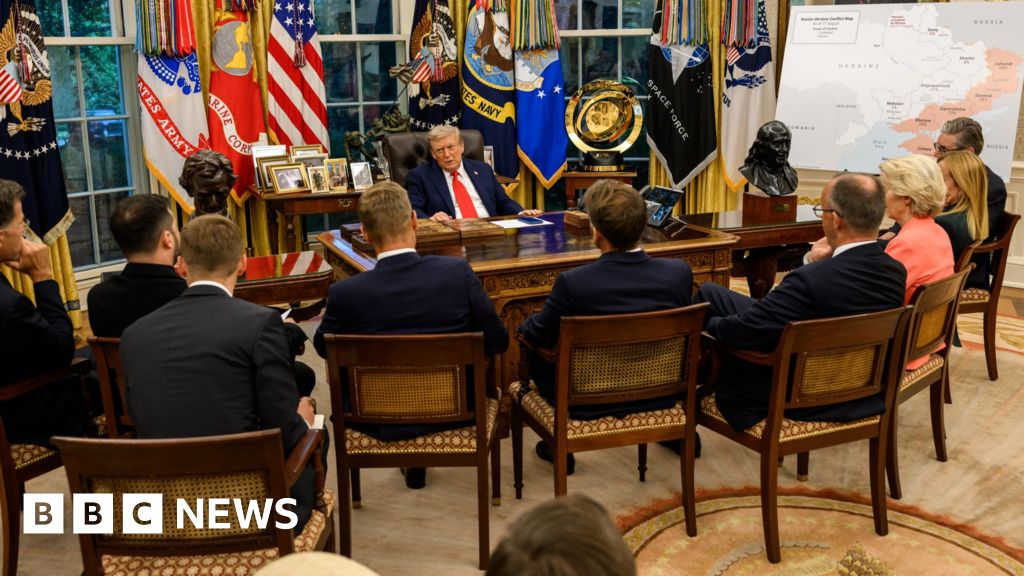

Leave a Reply